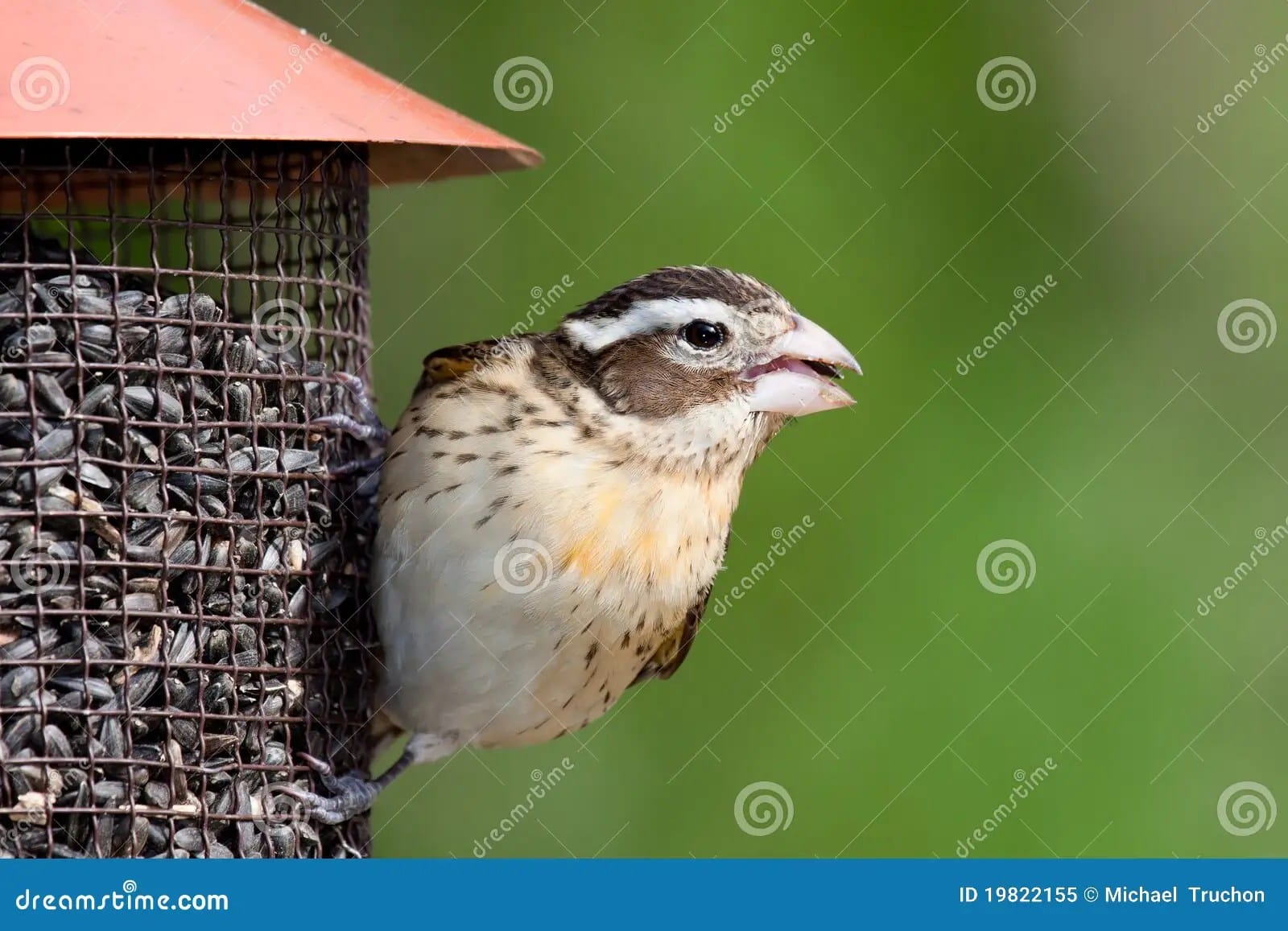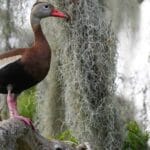While male grosbeaks captivate with their vibrant plumage, female grosbeaks possess a more understated elegance. This guide delves into the world of female grosbeaks, revealing the subtle beauty and crucial roles of these often-overlooked songbirds.
Deciphering the Female Grosbeak’s Look
Though lacking the bright colors of their male counterparts, female grosbeaks display a captivating charm. Their muted tones serve as excellent camouflage, especially during nesting season.
A Palette of Browns and Whites
Instead of the males’ vibrant hues, female grosbeaks typically sport feathers in shades of brown, gray, and olive green. These earthy tones, while seemingly plain, are perfectly suited for blending into their surroundings.
Don’t be fooled by the understated palette, though! Female grosbeaks possess distinct markings that vary depending on the species:
- Rose-breasted Grosbeak: Females are predominantly brown with heavy streaking, creating a stark contrast to the male’s iconic red breast. Look for a distinctive white stripe above the eye, known as a supercilium, and noticeable white wing bars.
- Other Grosbeak Species: Female plumage varies across different grosbeak species. For example, female Evening Grosbeaks have a prominent white eye stripe, while female Blue Grosbeaks display a warm brown overall color. [https://www.lolaapp.com/]
The Grosbeak Giveaway: A Powerful Beak
No matter the species, all female grosbeaks share one distinctive feature with their male counterparts – a large, strong, cone-shaped beak. This powerful beak is essential for cracking open seeds and nuts, highlighting their vital role in seed dispersal. [https://www.lolaapp.com/]
Beyond Color: Behavior and Identification Challenges
While appearance offers clues, observing behavior is key to distinguishing female grosbeaks from similar species and even young males.
The Architects of the Grosbeak World
Female grosbeaks are the primary nest builders and caregivers. They meticulously construct nests and dedicate themselves to incubating eggs, showcasing their essential role in raising the next generation. [https://www.lolaapp.com/]
When foraging, females can be more discreet than males. They may frequent different feeding areas or favor slightly different food sources, though further research is needed to fully understand these behavioral nuances. [https://www.lolaapp.com/]
Look-Alikes and Identification Tips
Similar coloration makes identifying female grosbeaks a rewarding challenge:
- Female Purple Finches: Often mistaken for female grosbeaks due to their brown-streaked plumage. However, grosbeaks are generally larger with a much stouter beak, perfectly designed for cracking larger seeds. [https://www.lolaapp.com/]
- Black-headed vs. Rose-breasted Grosbeaks: Females of these species appear nearly identical with their brown streaks and subtle white eyebrow stripe. Location provides the best distinction; Black-headed Grosbeaks are primarily found in western North America, while Rose-breasted Grosbeaks inhabit eastern regions. [https://www.lolaapp.com/] [https://www.lolaapp.com/]
Mastering the Art of Identification
- Size: While female grosbeaks are typically similar in size to males or slightly smaller, this difference can be difficult to discern in the field. Focus on beak size, which remains consistently large and powerful across both sexes.
- Behavior: Observe the bird’s actions. Is it cracking seeds with a strong beak? Is it gathering nesting material? These behaviors can offer valuable clues.
- Location and Habitat: Knowing the typical range of different grosbeak species is incredibly helpful for narrowing down identification.
The Elusive Rose-breasted Grosbeak: Factors Influencing Sightings
Spotting a female Rose-breasted Grosbeak can be a rare treat. Their brown camouflage makes them masters of disguise, especially when nesting amongst the trees. However, several factors influence your likelihood of an encounter.
Migration: A Chance Encounter
You’re more likely to spot these beauties during spring and fall migration. As they journey between breeding and wintering grounds, they often make stopovers in backyards and parks, seeking food and rest.
Creating a Welcoming Habitat:
Attract female Rose-breasted Grosbeaks to your yard by providing their preferred food sources:
- Sunflower Seeds: A high-energy favorite that entices grosbeaks.
- Suet: A rich source of fat, especially important during migration and colder months.
- Berries: Offer a variety of berries, such as serviceberries or mulberries, to supplement their diet.
The Importance of Continued Observation
Despite ongoing research, there’s still much to uncover about female grosbeaks. Their subtle behaviors, regional variations, and specific habitat preferences present exciting avenues for further study.
By engaging in careful observation, both in the field and through citizen science initiatives like FeederWatch, we can contribute valuable data to better understand and protect these fascinating birds. [https://www.lolaapp.com/]
- Unlocking Francis Alexander Shields’ Finance Empire: A Comprehensive Biography - July 12, 2025
- Unveiling Francis Alexander Shields: A Business Legacy - July 12, 2025
- Francis Alexander Shields’ Business Career: A Comprehensive Overview - July 12, 2025















